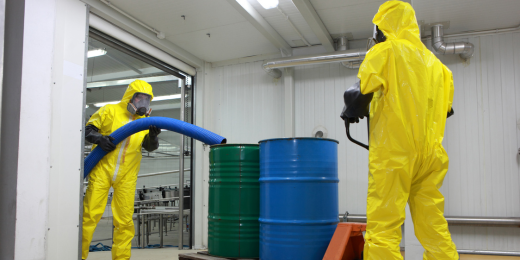Reclaim Waste - An Overview
Table of ContentsReclaim Waste Things To Know Before You Get ThisReclaim Waste Fundamentals ExplainedGetting My Reclaim Waste To WorkFascination About Reclaim WasteNot known Incorrect Statements About Reclaim Waste
Discover the kinds, occurrences, and types of liquid waste. Domestic sewer waste describes the waste and products from a household septic storage tank. This sort of waste is produced by people in houses, colleges, and other structures. This only consists of sewage-disposal tanks that have a drain field. The proper management and disposal of residential sewer waste need liquid waste to be transferred to a sewer therapy plant where the proper methods and equipment are related to detoxify and get rid of waste.
Business waste typically includes potential hazards, such as flammable materials or a mix of fluid and solid waste items, and needs an advanced and in-depth disposal process. The disposal of industrial waste typically entails the purification of waste before transport to guarantee risk-free and appropriate disposal. Hazardous waste is developed from results and drainage of industrial procedures and production.
This kind of waste can not use the same sewer management transport or procedures as septic or business liquids. The commercial waste monitoring process calls for the assessment and testing of liquid waste prior to it undertakes the disposal procedure (industrial wastewater treatment). Runoff waste is the liquid waste that comes from runoff and excess stormwater in extremely inhabited areas or cities
Overflow waste can trigger contamination and flooding otherwise taken care of appropriately. Find out more about drain cleansing and waste management. Ensuring proper waste management can avoid disasters and lower environmental damage. Both people in domestic setups and specialists in business or manufacturing markets can gain from understanding the procedures and laws of liquid waste management.
Reclaim Waste Can Be Fun For Anyone
Contact PROS Solutions today to discover our waste management and disposal solutions and the correct ways to look after the fluid waste you produce.
(https://www.provenexpert.com/reclaim-waste/)Do you know what occurs to your water when you draw the plug, purge the toilet or drain pipes the cleaning maker? No? Well, it's worth recognizing. This so-called 'wastewater' is not only an essential resource however, after treatment, will certainly be launched to our land, rivers or the ocean. Made use of water from commodes, showers, bathrooms, kitchen sinks, laundries and commercial procedures is called wastewater.

water made use of to cool down machinery or clean plant and tools). Stormwater, a type of wastewater, is overflow that flows from farming and city locations such as roofs, parks, gardens, roads, courses and seamless gutters into stormwater drains pipes, after rainfall. Stormwater moves unattended straight to local creeks or rivers, eventually reaching the ocean.
The Greatest Guide To Reclaim Waste
In Queensland, many wastewater is treated at sewage therapy plants. Wastewater is transported from domestic or commercial sites via a system of drains and pump terminals, known as sewage reticulation, to a sewage therapy plant.
The Department of Natural Resources advises regional federal governments about handling, operating and maintaining sewerage systems and therapy plants. In unsewered areas, regional governments might require homeowners to mount specific or house sewage treatment systems to treat domestic wastewater from commodes, kitchen areas, restrooms and laundries. The Division of Natural Resources authorises the usage of household systems when they are confirmed to be reliable.
In some new neighborhoods, treatment of some stormwater to remove clutter, sand and crushed rock has actually started using gross contaminant traps. Wastewater therapy happens in four stages: Gets rid of strong matter.
Wastewater after that streams right into huge storage tanks where solids settle and are eliminated as sludge. Oil and scum are skimmed from the surface area. Utilizes little living microorganisms recognizes as micro-organisms to break down and eliminate continuing to be dissolved wastes and great fragments. Micro-organisms and wastes are integrated in the sludge. Removes nitrogen and phosphorus nutrients that could cause algal flowers in our waterways and threaten water life.
Get This Report on Reclaim Waste
Nutrient removal is not offered in any way sewage treatment plants because it requires expensive specialised equipment. It is becoming more typical in Queensland. Clear liquid effluent produced after therapy might still include disease-causing micro-organisms. If this effluent is released right into rivers such as rivers or the sea, the micro-organisms will at some point pass away out.

Many wastewater streams right into the sewerage system. Under the Act, neighborhood federal governments provide authorizations and permits for ecologically relevant activities (ERAs) entailing wastewater launches that may have a regional effect.
The Greatest Guide To Reclaim Waste
Surveillance gives accurate info regarding water top quality and can verify that permit problems are being satisfied. The info click for more info gotten through monitoring gives the basis for making water high quality choices.